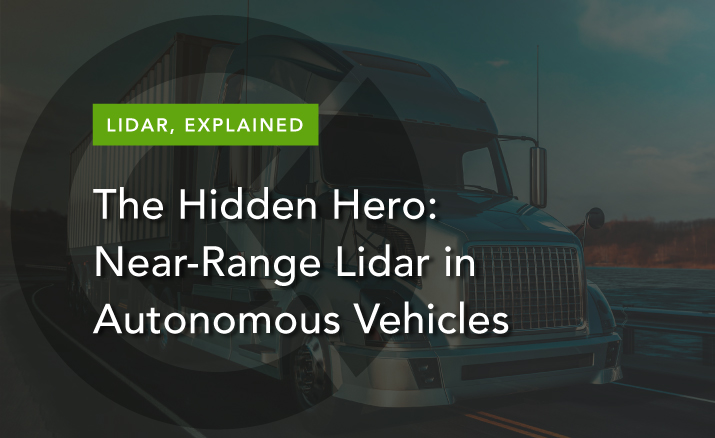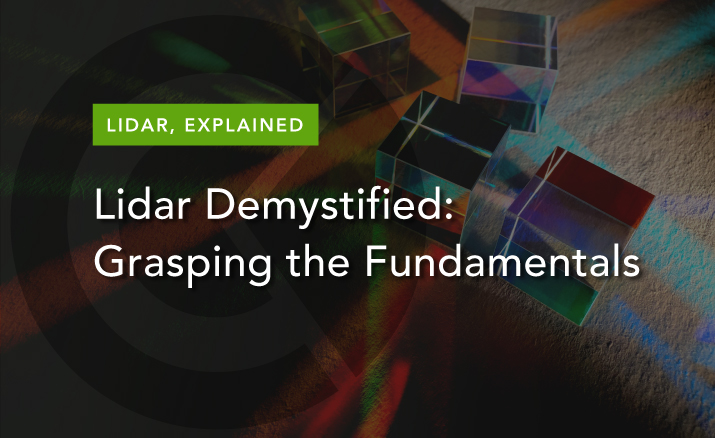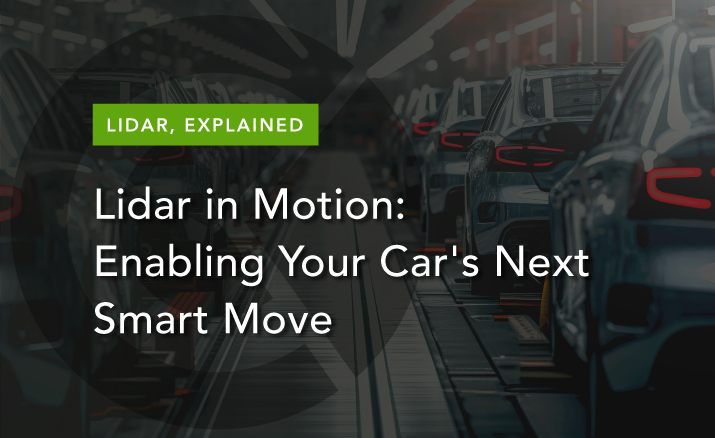From the industry's hottest debates to everyday observations, seasoned technologist and serial entrepreneur Dr. Jun Pei brings you insights from the forefront, revealing why Cepton is fully invested in driving the mass adoption of lidar.
Questions answered, misconceptions cleared. In this blog, we explain everything about lidar technology. Whether you are new to the field or are familiar with the technicalities, we aim to offer fresh perspectives on the advancements in lidar commercialization.

As autonomous vehicles evolve, the integration of lidar alongside radar and cameras becomes pivotal in achieving robust and foolproof autonomy. Near-range lidar technology is revolutionizing automated driving capabilities, offering precise environmental sensing that is crucial for safe and efficient operation.

The complexities of lidar technology underscore the critical interplay between many key specifications. While advancements in lidar architecture continue to refine these metrics, achieving optimal balance remains paramount for manufacturers. Usable and scalable lidar solutions should address challenges such as size, power consumption, and cost alongside performance metrics.

Understanding lidar specifications is crucial for grasping its capabilities and limitations in various applications. While specifications like Maximum Detection Range may seem straightforward at first glance, nuances in measurement methods and target conditions can significantly impact their interpretation. Let's delves into the complexities of lidar specifications, shedding light on what they truly signify and what crucial details they might not reveal.

When lidar companies market the performance of their products, they often use a list of key specifications and claim leadership with one or two very impressive numbers. This can sometimes be misleading, as lidar specifications are interrelated, and performance is not determined by a single metric or two. How do we know if a lidar delivers the performance needed for its intended use case? We focus on data – real data, real results.

What are the three building blocks of lidar technology? What advancements have been made in beam steering technologies to increase lidar’s scalability? Is 1550nm lidar better than 905nm lidar? What’s the difference between ToF and FMCW?

What is lidar? Where is lidar being used? Autonomous driving is not happening soon – why do we still need lidars in cars? In what driving scenarios is lidar most helpful? Are lidars safe for the human eye?

What’s the difference between lidar and radar? With camera and AI, why is lidar still needed in vehicles? Why is it taking so long for lidar to go into passenger cars? How far does a lidar need to see for ADAS? What about fully autonomous driving? Why does power consumption matter for automotive lidar? Why does an automotive lidar need to be as compact as possible?

Where has lidar been used in smart infrastructure? What types of data does lidar capture? Can lidar fully replace camera in smart infrastructure applications? Are lidar-based perception solutions for smart infrastructure the same as those for automotive applications?

In summer 2022, Jun took a trip in Japan to visit Cepton's longtime partner Koito. In one of the Koito facilities, as Jun was watching the products roll of the production line unit by unit, the moment was interrupted by the detection of a "problematic" unit. When Jun found out what the issue was, he witnessed yet another example of how Japanese craftsmanship plays a key role in ensuring top-quality production of automotive products.

In this Driving Lidar blog post, Jun shares a letter he received describing the traumatizing impact of even a minor car accident through the lens of a Cepton intern. Safety drives us. It's why Cepton is invested in driving proactive actions to help ensure safer environments, safer roads and safer vehicles for you and the ones you love.

When Elon Musk said in 2019 that lidar is expensive, was he right? Well, lidar used to be expensive, but today it’s a different story. In this Driving Lidar blog post, Jun discusses what the trajectory of the lidar market means for cost, performance, consumer trust, and beyond.

Are we living a safer life today as smart technologies make everything easier? To Jun, convenience is only a valid concept when it’s enjoyed without safety concerns, especially when it comes to driving. In this Driving Lidar post, Jun discusses how lidar brings precision and certainty to vehicle perception.

Jun explores whether mixed messaging over the capabilities of 'autonomous’ vehicles is diluting leaps forward in safety technology. While entirely autonomous vehicles could be exhilarating news for those who’d like to be relieved of driving duty, Jun discusses whether companies overpromising and underdelivering on safety is a concern. Are we getting the balance right?







